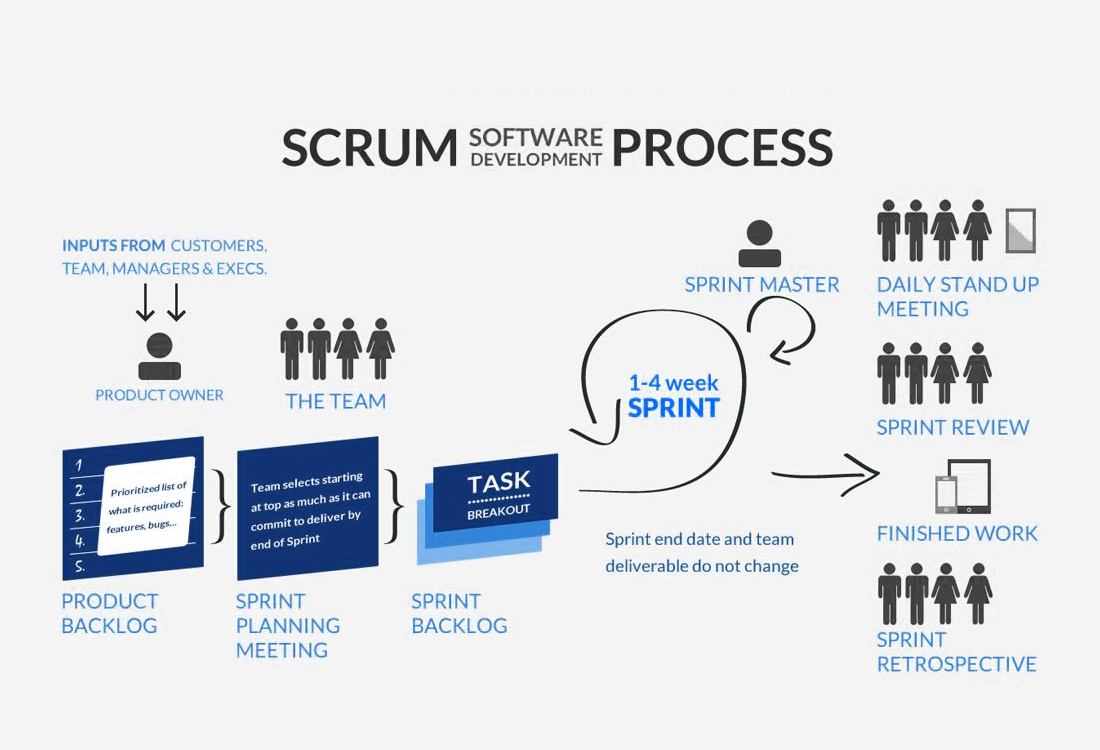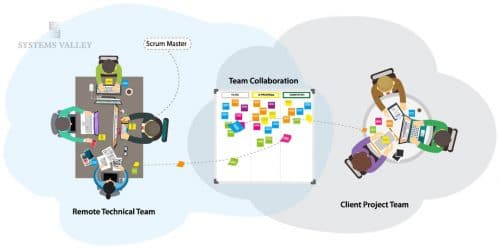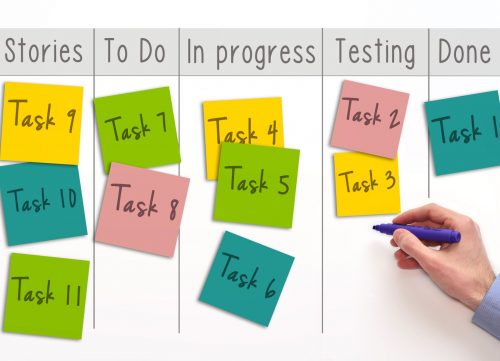Scrum is a popular subset of implementation of the Agile technology that involves organizing all the developers as one team for achieving a common goal: developing a product that is ready for the market. The basic goal of scrum is to ensure high performance for the entire team.

How Scrum Works
Scrum is a method used in rugby where all the players actually put their heads together. In software development, you can think of scrum as a method where all the developers brainstorm to resolve complex issues.
Scrum starts with making a wish list of features, or a product backlog. The team discusses and decides on the following:
- The backlog
- Features that need completion
- The time required for the tasks
Scrum depends on the agile software development concept of sprints, which are short time periods during which the development actually takes place, and may be one week, to one month. The objective of a sprint is the development of a product that can be marketed.
At the end of a sprint, there is a review, after which the team decides on another feature to develop – or another piece of backlog, beginning a new sprint. The sprints keep continuing until the project is completed. Daily scrum meetings are held to discuss the progress since the previous meeting and to plan the day’s work. The meetings are short, usually about 15 minutes, with every member present, and prepared.
Who is in the Scrum?
- The scrum team – the software developers who do the work to produce the product
- The scrum master –who ensures that the team remains focused and complies with scrum rules
- The product owner – represents the customer, assigns priorities to the backlog, and coordinates the scrum teamwork
Benefits of Scrum
Software developers deploy scrum to complete projects quickly; they enjoy these benefits:
- Developers have more decision-making freedom
- There is higher team morale
- There is greater transparency as both product owner and stakeholders are involved and communicate with each other regularly
- Every sprint ends in a saleable product even if the project is a work-in-progress; most urgent requirements are completed first to ensure development of a superior quality, low risk product.
- Decreases time-to-market by 30-40%; requirements are delivered as and when needed
- Higher ROI due to continuous feedback, reduced time-to-market and fewer, less expensive defects, review of every sprint before starting a new one, constant testing, adapting project focus and goals to align with evolving business goals.
Software development companies who implement Scrum enjoy a competitive edge in the industry, and it’s expected that more and more companies will implement this methodology in their work.




